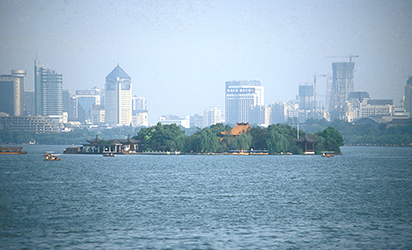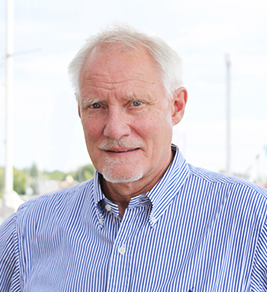Kjell is no longer working at Nordregio. For contact or more information please contact nordregio@nordregio.org
Kjell Nilsson was director of Nordregio between 1 February 2013 until 31 of January 2021. He has also been Head of the Department of Parks and Urban Landscape and Deputy Director at the Danish Ministry of Environment and University of Copenhagen, and Senior Advisor (statskonsulent) at the Swedish University of Agricultural Sciences.
In the 1980s, together with colleagues Eivor Bucht and Ole Andersson, Kjell Nilsson established the Movium Secretariat at the Swedish University of Agricultural Science in Alnarp. As responsible for Movium’s extension service, he laid the foundation for a model that is still applied today when it comes to disseminating research-based knowledge to the park sector in both Sweden and Denmark.
Since 1995, Kjell Nilsson has initiated and coordinated interdisciplinary research projects both nationally and internationally. “Boundaries in the Landscape” under the Danish research programme “Man, Landscape and Biodiversity”, PLUREL (Peri-urban Land Use Relationships – Strategies and Sustainability Impact Assessment Tools for Urban-rural Linkages) – an integrated project under the 6th EU Framework Program, and NORDGREEN (Smart Planning for Healthy and Green Nordic Cities) – recently funded by NordForsk, are examples of this.
Another focus for Kjell Nilsson’s research activities is on Urban Forestry & Urban Greening, where, together with Thomas Randrup, Stephan Pauleit, and Cecil Konijnendijk, he created the world’s leading research environment in this field in the late 1990s. From 1997 to 2001 he was chairman of COST Action E12 “Urban Forests and Trees” and from 2004 to 2008 of E39 “Forests, Trees and Human Health and Well-being”. He has also contributed actively to the development of urban greening as a concept for environmental assistance in countries like Malaysia, China. Russia and South Africa.
Currently, Kjell Nilsson is primarily focused on urban and rural development in the Nordic Region. State of the Nordic Region, a biannual status regarding demography, labour market and economic growth at the regional and local level is an example of this. Other topics that concern his interest are the development of remote, sparsely populated areas in the Arctic and Nordic sustainable cities as a solution to global urbanisation challenges.
Academic qualifications
Doctoral degree in agricultural sciences, Swedish University of Agricultural Sciences 1989
MSc in landscape architecture, Swedish University of Agricultural Sciences 1978
Human geography, Stockholm University 1975
Languages
Swedish
English
Danish
German
Prior positions
Danish Centre for Forest, Landscape and Planning; University of Copenhagen
Deputy Director, Head of Division of Parks and Urban Landscape. January 2004 – December 2012
Danish Forest and Landscape Research Institute, Ministry of Environment
Deputy Director-General, Head of Department of Parks and Landscape. August 1993 – December 2003
MOVIUM, Swedish University of Agricultural Sciences
Statskonsulent. June 1984 – July 1993
Swedish Ministry of Education
Expert. June 1991 ‑ January 1992
Department of Landscape Planning, Swedish University of Agricultural Sciences
Research Assistant, Associate Professor, Study Program Manager. March 1978 ‑ March 1987

